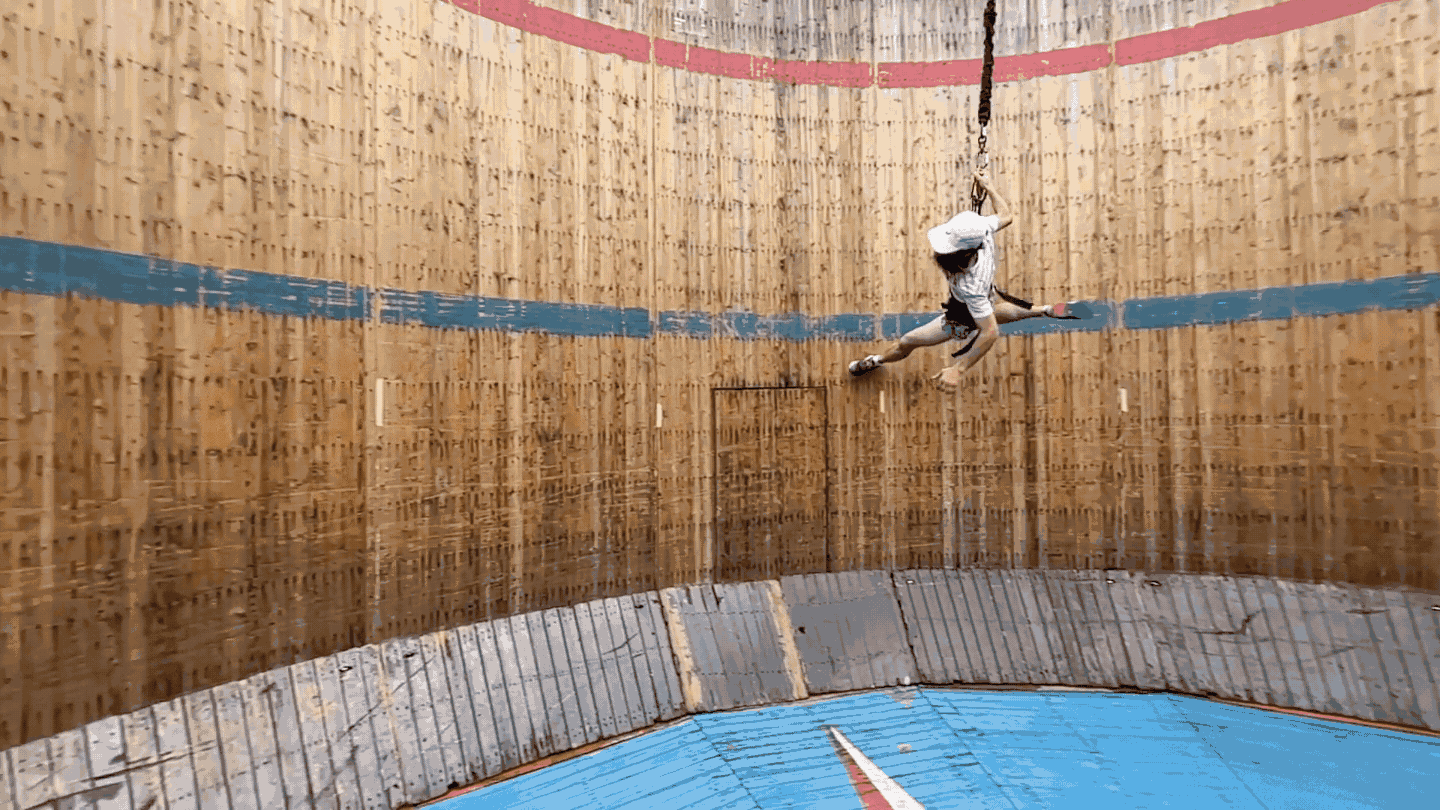Scientists Shift Focus from Moonwalking to Moon Running

On a gloomy, rainy day near Parma, Italy, two scientists, Gaspare Pavei and Valentina Natalucci, challenged what is known as the Wall of Death. The latter is a unique amusement park feature that resembles a massive wooden barrel with an open top. Thrill-seekers on motorcycles rush up and down the barrel's inner circular wall, inexplicably contradicting gravity.
However, Pavei and Natalucci were not joining in the daredevil motorcycling acts. They were experimenting with a possible way of running on the moon.
Should their assumptions be correct, future moon residents who run fast enough inside a cylinder would be capable of staying on the wall, not floating to the bottom, says Alberto Minetti, a physiologist from the University of Milan. This implies that the method might one day provide lunar inhabitants a novel form of exercise similar to those on Earth, albeit about 384,000 kilometers away.
As the moon's gravity is only approximately one-sixth of Earth's, exercise on the moon and on Earth are vastly different. Lower gravity means the physiological stress experienced by humans on the moon differs from that on Earth. On Earth, activities like running on hard ground or doing push-ups strengthen muscles and bones. In contrast, in the lower-gravity environment on the moon or in space, muscles waste away and bones become fragile. Scientists are exploring ways to mitigate these harmful effects, Minetti explains.
Running horizontally against the curved wall of a cylinder generates a centrifugal force similar to the force that holds water at the bottom of a bucket that is being swung overhead. Sufficient force could provide moon runners and scientists in Italy with an experience close to Earth's Gravity.
On a grim day in June, Minetti's lab members Pavei and Natalucci suited up in harnesses hung from a crane, almost 40 meters high, for a leap in the name of science. Their almost weightless state simulated moon gravity. The challenge was to transition from a vertical stance on the ground to a horizontal run along the cylinder's walls.
Pavei attempted first, running headlong at the wall like a parkour enthusiast but skidding gently back to the ground return after multiple unsuccessful attempts. Drawing inspiration from the Wall of Death motorcyclists, Pavei approached the wall diagonally, running counterclockwise up a ramp at the base of the cylinder, and before long, he was running nearly horizontally with his body practically parallel to the ground.
Minetti recalls shrieking with excitement from the ground. Despite the theoretical prediction of this outcome, seeing it in reality was quite different, he recounts.
This realized experiment was the result of almost two years of preparations including liaising with crane rental companies, amusement parks, and winning over his university.
The scientists gathered data during numerous trial runs by Pavei and Natalucci, which helped them estimate the force generated during the sprints - approximately three-quarters of a g. Based on these results, the team concluded that lunar colonists could prevent bone loss by running eight to nine laps daily, even with intervals of rest.
The team is showing even more ambition, with the university approving the construction of the Moon Wall, or M-Wall, designed for scientific experiments.
Minetti points out a minor issue for any would-be moon runners: the need for speed. They have to race pretty fast, he says, about 5 to 6 meters per second — roughly a 5-minute mile. But you don’t need to be an elite athlete to achieve this speed in short bursts, Pavei says. It’s roughly half as fast as the world record for the 100-meter dash, set by Olympic track-and-field champion Usain Bolt. Running faster, though, would generate more artificial gravity and have a greater impact on the body. If Bolt, for instance, were to sprint around the wall at top speed, he’d probably have no trouble surpassing 1 g, Pavei says.
But to confirm that, he adds, “I would be very happy to test him.”




